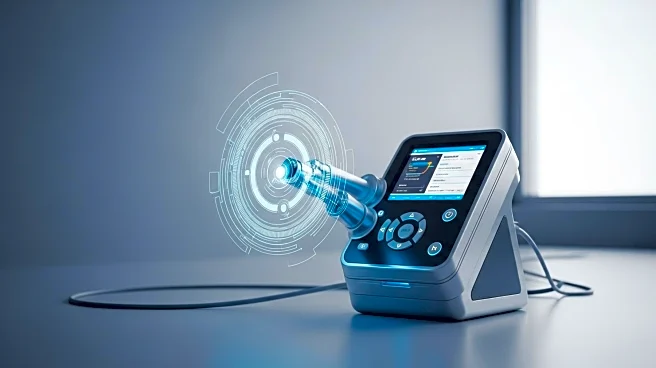What's Happening?
The global flow diverters market is anticipated to grow significantly, reaching USD 3.5 billion by 2034, according to a recent report. Flow diverters are specialized endovascular stents used to treat intracranial aneurysms, particularly those that are wide-necked or large, which are challenging to manage with traditional methods. These devices work by redirecting blood flow away from the aneurysm sac, promoting vessel healing and reducing rupture risk. The market's growth is attributed to technological advancements in device design, biocompatible coatings, and delivery systems, as well as increased adoption in emerging markets. Key players in the market include Medtronic, Stryker, and MicroVention, with innovations in dual-layer and bioactive coated systems expected to drive future growth.
Why It's Important?
The expansion of the flow diverters market is significant for the healthcare industry, particularly in the field of neurointerventional care. The shift towards minimally invasive endovascular solutions is reducing the need for invasive neurosurgery, offering safer and more effective treatment options for patients with intracranial aneurysms. This growth is expected to benefit healthcare providers by improving patient outcomes and reducing treatment costs. Additionally, the increasing adoption of these devices in emerging markets like Asia-Pacific and Latin America highlights the global demand for advanced medical technologies. However, challenges such as high device costs and the need for skilled specialists may impact market growth in developing regions.
What's Next?
The market is expected to see continued innovation, with the development of next-generation bioactive and coated flow diverters. The integration of AI-based imaging and robotics for improved placement accuracy is also anticipated. As the market evolves, competition among major medtech companies and niche neurovascular specialists is likely to intensify. The focus will be on enhancing device safety and efficacy, expanding access to minimally invasive neurosurgical solutions, and addressing reimbursement challenges in low- and middle-income countries.
Beyond the Headlines
The growth of the flow diverters market may have broader implications for healthcare systems worldwide. As these devices become more widely adopted, there could be a shift in how intracranial aneurysms are managed, potentially leading to changes in medical training and healthcare infrastructure. The emphasis on minimally invasive procedures may also influence patient preferences and expectations, driving further innovation in medical device technology.










